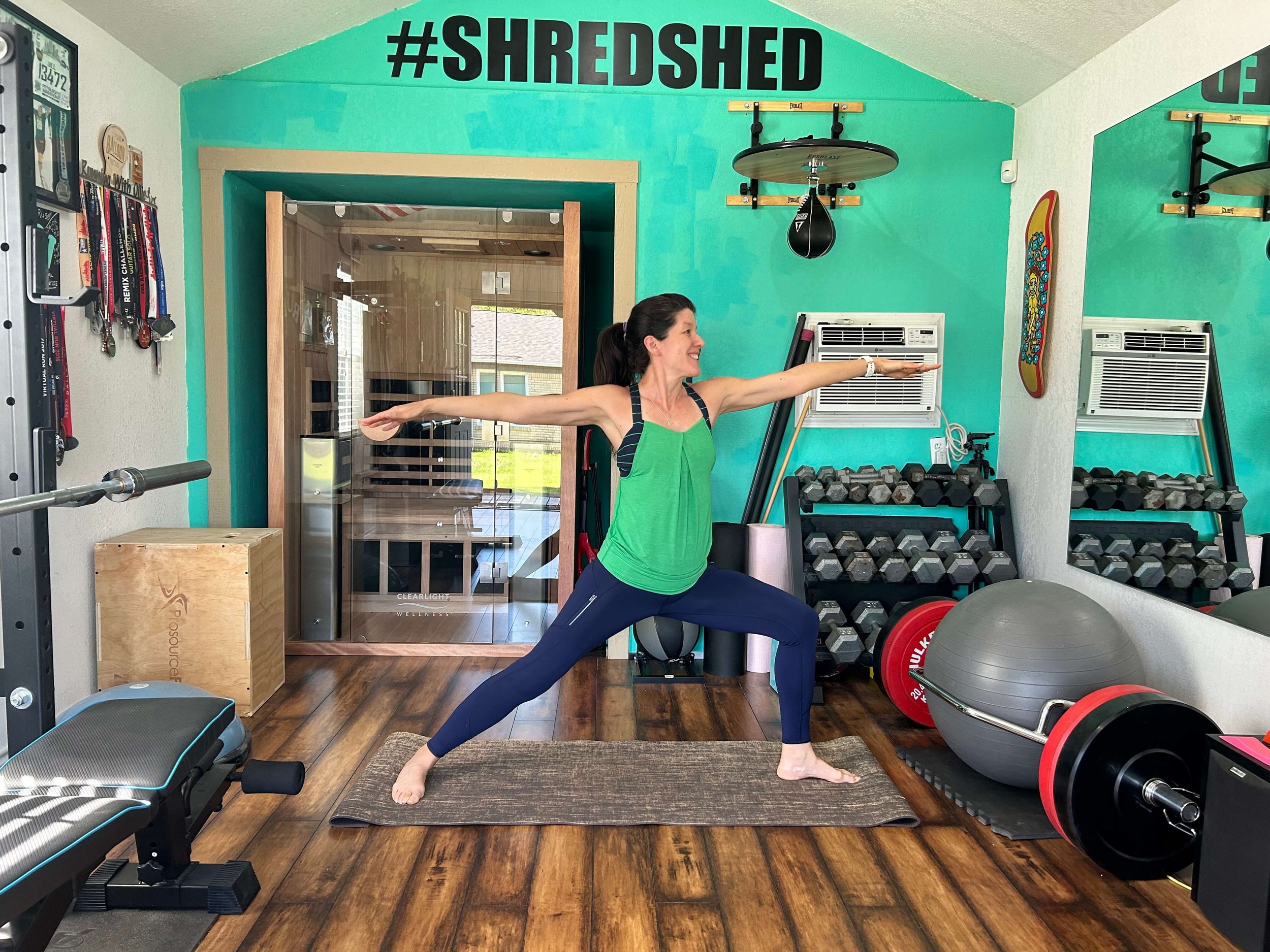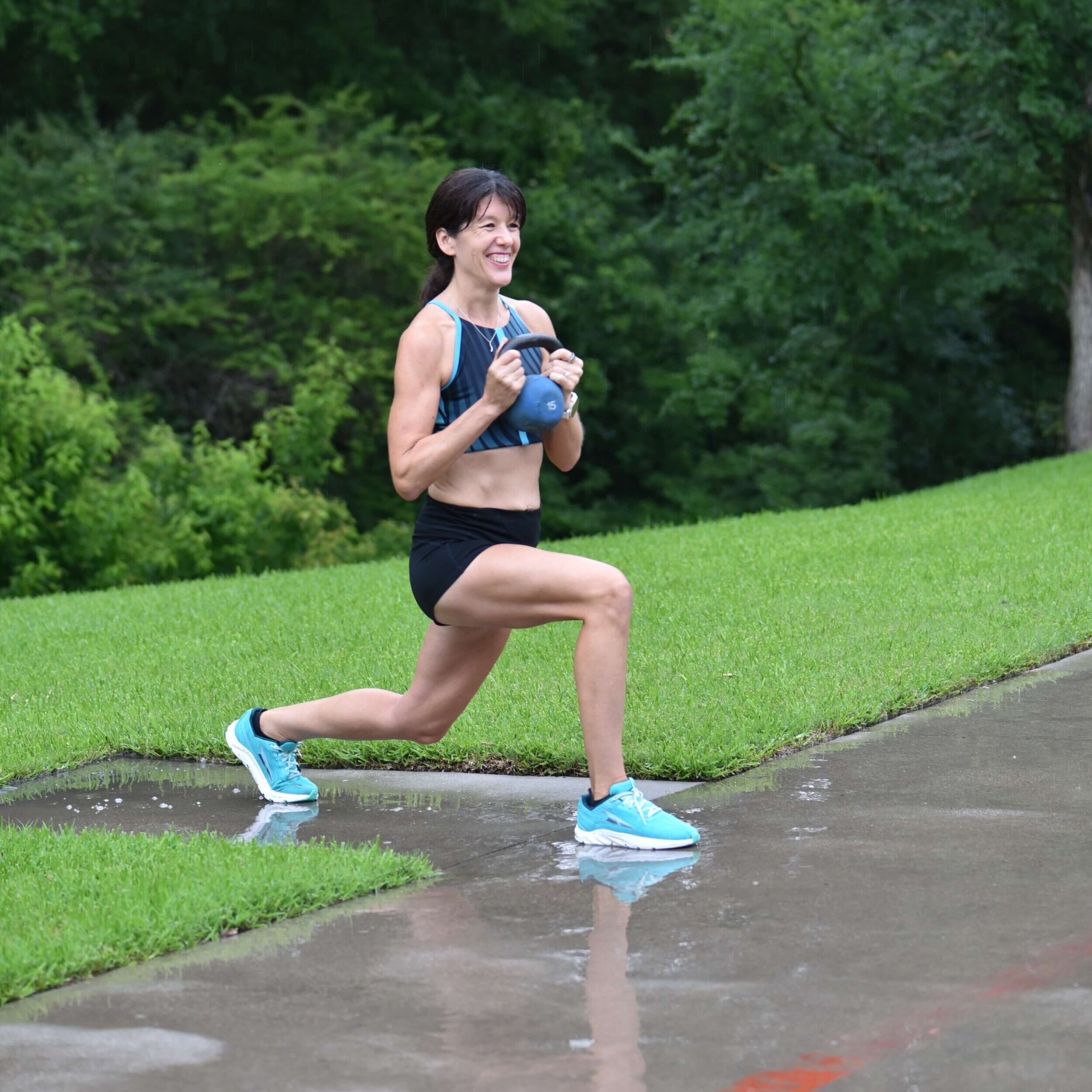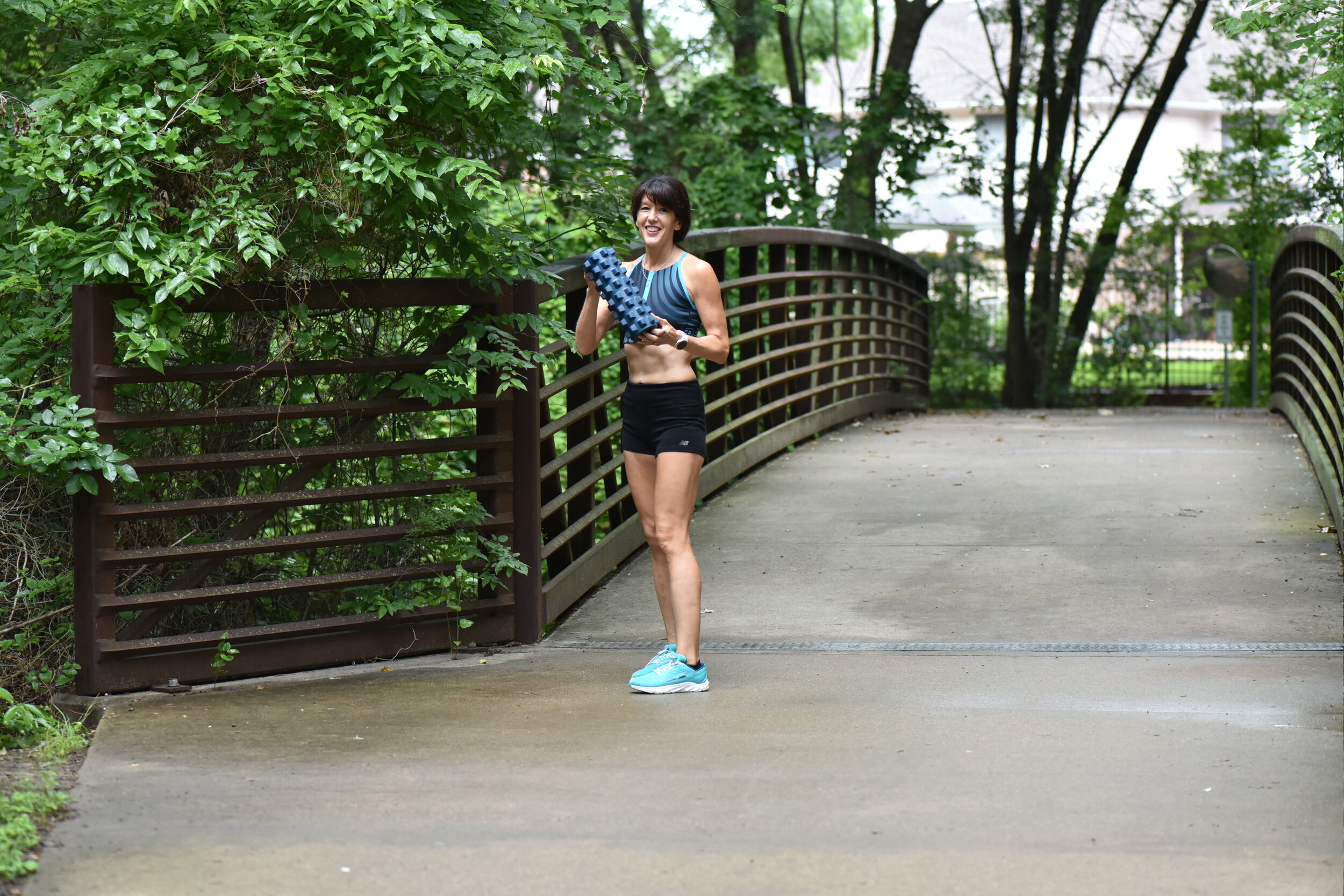In this day and age we are often short on time so we look at ways to make things more efficient. What can we do faster? What can we do in less time? Sometimes that means that we do interval workouts instead of ones that take more time with long rest periods. Sometimes it means we increase the intensity but spend less time working out overall. These are great solutions to working out more efficiently but one thing you should never do to save time is skip the warm up, cool down or stretching portions of your workout. Skipping your warm up, cool down and stretching will not get you to your goals faster and may lead to injury, hinder your results and performance.
FOAM ROLLING
foam rolling in the SHREDSHED
Foam rolling is called self-myofascial release. It is similar to a massage in that it releases muscle tension in overactive or shortened muscles. Use a foam roller (or similar device) before exercise to apply pressure to break up the knots within the muscle to release muscle tightness or tension. Foam rolling is suggested before stretching to potentially improve flexibility. I go into more detail on foam rolling in this post about foam rolling for runners. Foam rolling is appropriate before or after exercise.
WARM UP
GENERAL WARM UP
An example of a general warm up is walking for 5-10 minutes before running or lifting weights. A general warm up is not necessarily specific to the movements that will be performed during the workout, but it prepares your body for the workout by increasing heart rate, raising your body temperature, increasing blood flow to your muscles and mentally preparing you for higher intensities.
SPECIFIC WARM UP
A specific warm up mimics the motions of the activity that will be performed during the workout. An example of a specific warm up is body weight squats before doing back squats with a weighted bar in the gym or high knees/butt kicks before a run.
STRETCHING
Stretching before exercise warms up your muscles, improves flexibility and can help correct muscle imbalances.
ACTIVE-ISOLATED STRETCHING
Active-isolated stretching is moving the joint through the full range of motion and holding the stretch for only 2-3 seconds. This is often considered superior to static stretching (holding the stretch for 30 seconds) because there is some evidence that static stretching before a workout can hinder performance in athletes performing explosive or power exercises. Consider the type of exercise you will be performing when choosing your stretch.
DYNAMIC STRETCHING
Dynamic (or functional) stretches are ideal for reasonably healthy and fit individuals. Dynamic stretches use momentum to take the joint through the full range of motion repeatedly. Hip swings, high knees, butt kicks and skips are examples of dynamic stretches.
COOL DOWN
The goal of the cool down is to gradually cool body temperature, reduce heart rate and slowly transition the body from exercise back to rest. You can reduce soreness and stiffness with a cool down after you exercise.
STATIC STRETCHING
Static stretching is holding the muscle in a stretched position for a minimum of 30 seconds. It allows your body to cool down after intense exercise and relaxes the muscles you worked. Exercise shortens and tightens the muscle, stretching it after exercise returns the muscles to their normal state, beginning the recovery process and improving flexibility.
Repeat after me: "I will never skip my warm and cool down again and I will foam roll and/or stretch before/after every workout." Your body will thank you for it!
Like this post? Please consider sharing.
I am a NASM personal trainer and RRCA adult distance running coach that specializes in strength training for runners. I offer in-person training in the Shredshed, online training and Fit to Run boot camps. If you are interested in a more in-depth running or strength training plan please contact me. Have questions? I'd love to help.
While I am a certified personal trainer, I am not your personal trainer. Since I don't know your exercise abilities, injury background or medical history, please see your doctor before beginning any new exercise program.













